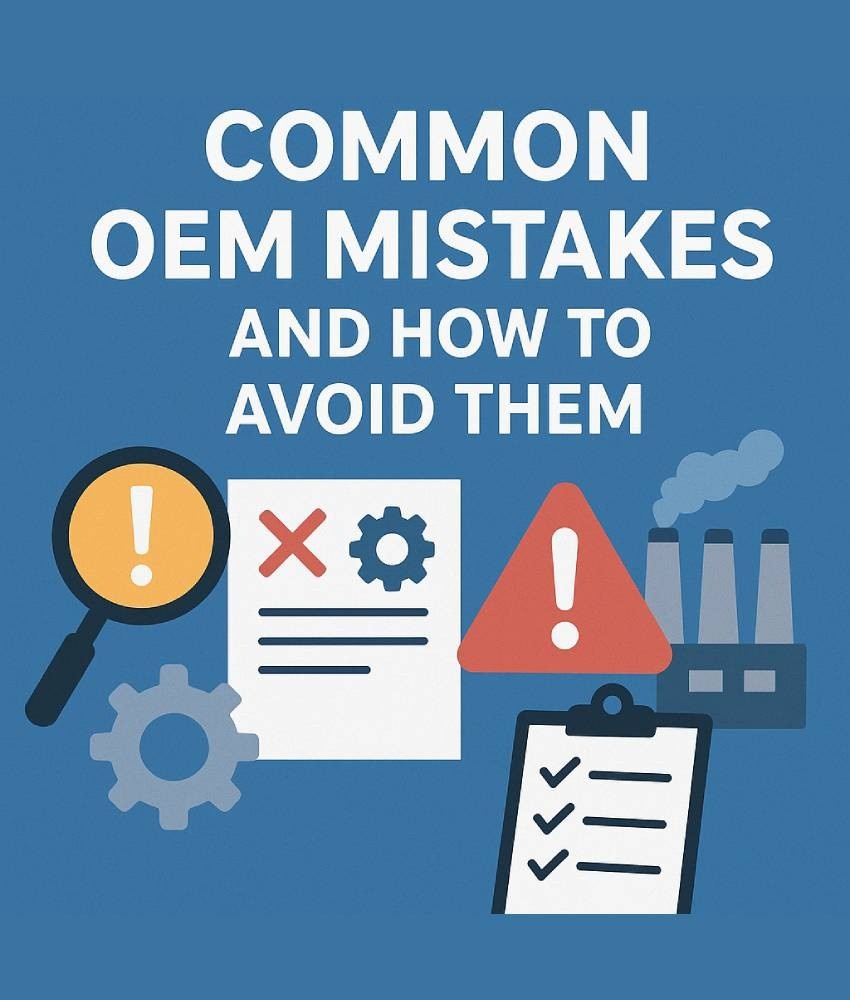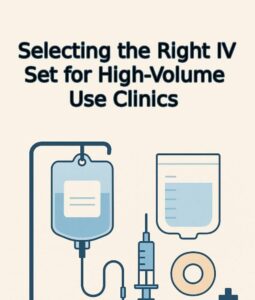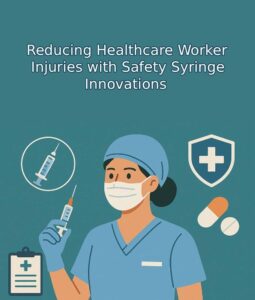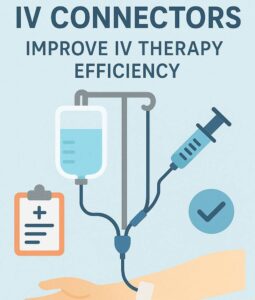In the fast-paced world of medical manufacturing, outsourcing production can streamline operations and speed up time to market—but only if you dodge the usual OEM pitfalls. From misunderstood specs to late deliveries and flawed documentation, most custom order mistakes stem from avoidable errors. To protect your business and reputation, it’s crucial to learn how to avoid OEM issues before they sabotage your next launch or production cycle.
This article breaks down the most common OEM mistakes in the disposable medical device space and gives you real-world, actionable strategies to keep your operations running smoothly. Know more..
1. OEM Pitfalls: What’s Really at Stake?
Working with an OEM (Original Equipment Manufacturer) means trusting a third party to bring your product vision to life. While outsourcing can cut costs and speed up development, poor planning or communication can lead to devastating OEM pitfalls:
- Regulatory non-compliance
- Delayed timelines
- Quality control issues
- Supply chain breakdowns
- Unrecoverable cost overruns
In the medical device industry—where failure can mean injury, recall, or litigation—these errors are amplified. Understanding how to avoid OEM issues begins with identifying where most custom order mistakes happen.
2. Mistake #1: Vague Product Specifications
Lack of detailed specifications is one of the biggest OEM pitfalls companies face. When your product brief lacks clarity, the manufacturer is left to guess—often wrongly.
How to Avoid:
- Provide complete drawings, CAD files, and physical prototypes if possible.
- List exact dimensions, tolerances, materials, and finishing requirements.
- Use a centralized product specification document and keep it updated.
- Include any regulatory classifications or labeling expectations upfront.
By clarifying expectations early, you drastically reduce the chances of custom order mistakes like incorrect dimensions, wrong catheter stiffness, or mismatched packaging.
3. Mistake #2: Ignoring Regulatory Requirements
OEMs can be great at manufacturing, but they don’t always keep up with changing global regulations. Assuming your OEM will handle compliance is a costly OEM pitfall.
How to Avoid:
- Define which party is responsible for regulatory filings, testing, and labeling.
- Share MDR, FDA, or ISO requirements at the start of the project.
- Request past audit reports or certifications (ISO 13485, CE, etc.).
- Perform your own compliance audits or hire a third-party quality consultant.
Ignoring regulatory needs is one of the most damaging custom order mistakes—and it can halt market access completely. Ensure compliance is baked into the OEM process, not tacked on as an afterthought.
4. Mistake #3: Underestimating Lead Times
A recurring OEM pitfall is poor planning around lead times. Clients expect OEMs to bend timelines, but capacity issues, raw material delays, or workforce shortages can derail production.
How to Avoid:
- Build a buffer into your production calendar.
- Ask for a realistic timeline, not just a promised one.
- Include penalties or incentives for delivery compliance in your contract.
- Set staggered deadlines for prototyping, tooling, pilot runs, and final production.
When clients avoid OEM issues by planning conservatively, they stay on schedule—even when external disruptions strike.
5. Mistake #4: Incomplete Quality Agreements
Too often, companies sign vague supplier agreements that don’t include detailed quality expectations. This opens the door to custom order mistakes like poor packaging seals, incorrect sterilization, or component mismatches.
How to Avoid:
- Draft a clear quality agreement (QA) that includes:
- Acceptable Quality Limits (AQL)
- Sampling procedures
- Sterility assurance levels (SAL)
- Test methods and frequency
- Traceability systems
- Require OEMs to log and share non-conformities in real time.
Avoid this OEM pitfall by spelling out exactly how quality will be defined, controlled, and audited.
6. Mistake #5: Overlooking IP Protection
You’re handing over proprietary designs, molds, and sometimes even branding to an outside partner. Without protection, this leads to a major OEM pitfall—intellectual property theft or copycat production.
How to Avoid:
- Always use non-disclosure agreements (NDAs) and non-compete clauses.
- File patents or trademarks before sharing designs.
- Define tooling ownership clearly in your contract.
- Use OEMs in countries with enforceable IP laws—or involve international legal support.
Failing to secure your rights is one of the most preventable custom order mistakes in OEM partnerships.
7. Mistake #6: Lack of Communication Protocols
Many OEM relationships collapse due to communication breakdowns. Misunderstandings cause delays, reworks, and mismatched expectations—classic OEM pitfalls.
How to Avoid:
- Assign a dedicated project manager on both sides.
- Use centralized platforms (e.g., Asana, Trello, or Monday) for communication.
- Schedule recurring calls with clear agendas.
- Keep all decisions and change orders in writing.
To avoid OEM issues, document everything and create an environment where feedback flows both ways.
8. Mistake #7: No Pilot Production or Testing Phase
Some companies move straight from design approval to full-scale production. Skipping the testing phase is a dangerous OEM pitfall, particularly for medical devices.
How to Avoid:
- Require a pilot run (at least 100–500 units) before mass production.
- Perform functionality, sterility, and usability tests on pilot units.
- Document feedback and apply changes before scaling.
This process helps catch custom order mistakes early—before you waste money on thousands of flawed units.
9. Mistake #8: Unverified Material Sourcing
Not all raw materials are created equal. If your OEM cuts corners on tubing, connectors, or plastic resins, the finished product may fail ISO or FDA inspections—an expensive OEM pitfall.
How to Avoid:
- Require raw material certificates of origin (COO) and compliance (RoHS, REACH).
- Specify approved vendors for critical components.
- Conduct material audits or request third-party lab tests.
- Insist on biocompatibility and cytotoxicity data for all contact materials.
If you don’t trace the source, you’re leaving yourself open to unexpected custom order mistakes during certification audits or product recalls.
10. Mistake #9: Failing to Budget for Tooling & Modifications
OEM costs don’t stop at the unit price. A major OEM pitfall is underestimating the cost and timeline for mold creation, prototyping, and adjustments.
How to Avoid:
- Request a full tooling quote up front.
- Ask whether molds are proprietary or shared with other customers.
- Clarify who owns the tooling after production ends.
- Budget 10–15% extra for unforeseen changes or part redesigns.
Avoid this OEM issue by planning for the unexpected—and negotiating tooling rights early.
11. Mistake #10: Not Auditing the OEM
You’d never skip a background check when hiring an employee. Yet many businesses fail to audit their OEMs before major production—one of the most critical OEM pitfalls of all.
How to Avoid:
- Conduct a virtual or on-site audit of facilities.
- Review SOPs, training records, and production workflows.
- Verify calibration logs and equipment maintenance.
- Interview the QA and production team directly.
An audit helps you catch potential custom order mistakes before they become shipment-stopping disasters.
Final Checklist: How to Avoid OEM Issues
Here’s your go-to checklist to avoid OEM issues and build a bulletproof custom manufacturing partnership:
✅ Provide clear, complete specs from the start
✅ Share all regulatory requirements and certifications
✅ Build a realistic production and testing timeline
✅ Draft a robust quality agreement
✅ Protect IP with legal contracts and patents
✅ Establish structured communication protocols
✅ Require and evaluate pilot production runs
✅ Audit material sourcing and component suppliers
✅ Budget for tooling and design revisions
✅ Conduct a thorough OEM facility audit
Conclusion
Choosing the right OEM can be a game-changer for your medical device business—but only if you avoid the most common OEM pitfalls. Clear specs, communication, legal protections, and documented processes aren’t optional. They’re essential.
By recognizing and addressing common custom order mistakes before they escalate, you can build a stable, scalable, and successful OEM relationship. Whether you’re creating a new disposable medical device or scaling an existing line, taking the time to plan and protect your process will pay dividends in quality, consistency, and customer satisfaction.
In short: know your risks, know your rights, and avoid OEM issues before they start.






